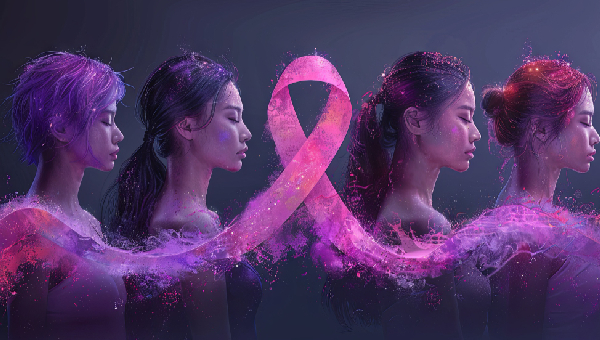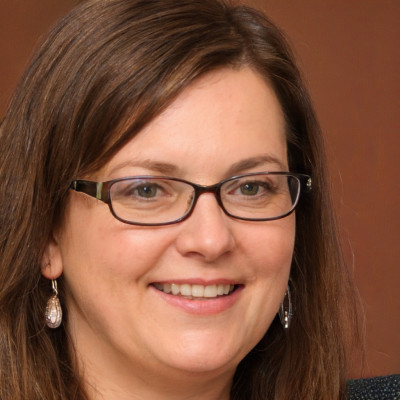Red, White, and Boom: Creative Ways to Celebrate Independence Day
Breast Cancer Myths vs. Facts: Separating Truth from Fear

There is no disease among women, regardless of the level of enlightenment and the noticeable progress in science that can be as hidden by untold rumors and misconceptions as breast cancer. These misconceptions may unnecessarily create panic or over reassurances which inhibit timely diagnosis and appropriate treatment. It is therefore prudent for individuals to approximate knowledge of myths and facts because this leads to empowerment concerning one's health care decisions. This article specifically will be concerned about breast cancer and its myths which the people commonly hold and real facts that counter those myths.
Myth 1: Family History is the Only Risk Factor
Breast cancer in females has prevalent myths, one of them is this disease is more likely to affect women who have any family history. Yes, to some extent having blood relations who have been diagnosed with breast cancer does increase a person’s risk, however, it is a fact that most women diagnosed with this disease have no such history in their families.
Fact: Most Cases Occur Without a Family History
According to the American Cancer Society also about only 5% to 10% of breast cancer cases can be related to genetic breast cancer inheritance, whether it be BRCA1 or BRCA2 mutations. On the contrary, it is estimated that more than 85% of breast cancer cases occur in women who do not have a family history of this illness. This shows the necessity of routine checkups and mammograms for all women, not only those who are known to have a genetically increased risk of this disease.
Myth 2: Breast Cancer Demonstrably Always Presents as a Lump
A lot of people have the notion that all breast cancers begin with a definite palpable mass. In assessing the presence of breast cancer, chances of detecting a mass or lump in the breasts are the most likely symptom noted, still, it should be emphasized this takes you back to the fact that no breast cancer is without lumps and all lumps are not a breast cancer.
Fact: Breast Cancer Is Not Always Represented By the Lump
Breast cancer may present itself in numerous forms including, but not limited to increases or decreases in breast size, dimpled skin on the breast, discharge of the nipple or redness of the breast. Some types of breast cancers such as inflammatory breast cancer do not warrant the patients to develop a lump but there may be swelling warmth and redness present instead. It is worth mentioning that all of the changes in the breast should be monitored closely and any abnormality should be inquired about. While it is also essential for the removal of the changed tissues mammograms aid in the recognition of the larger problem before it is apparent.
Myth 3: Men Do Not Have Breast Cancer
Breast cancer is often regarded as a women’s problem, and hence men are not considered to be at risk, a dangerous mindset. Such ignorance can hinder men from going for early screening or diagnosis.
Fact: Men Can Have Breast Cancer as Well
The Breast Cancer Commission on Cancer gives the prognosis of male breast cancer in women – one in Jail or 85 years. Men should also be on the lookout for signs such as lumps, alterations in the nipple, and also in the growing tissue of their breasts. Men tend to need to take note of the fact that just like the lady, they too need to be as careful regarding breast cancer as possible including the imminent detection of the malignant structure.
Myth 4: Underwire Bras Are A Risk To The Wearers
One of the more persistent myths that have arisen in connection with breast cancer is that an underwire bra can increase the chances of contracting the disease. Undoubtedly, what remains behind the argument is the idea that underwired bras block the pathways of lymph drainage, hence resulting in detoxification stagnation in the breast’s tissues.
Fact: Bras Keep You from Getting Breast Cancer
While undergarments such as underwire bras have not been ever blamed for this ailment, some have made such exaggerated statements that they must acknowledge and reinforce stereotypes of gender relations. The National Cancer Institute and the American Cancer Society have done away with this belief. Based on the current knowledge and understanding of the causes of breast cancer, it is mainly hereditary factors and behavior that embrace eating ways, physical activities, and smoking. The wearing of underwire bras does not bear upon the increased rate of cancer.
Myth 5: Antiperspirants Give Women Breast Cancer
Another widely known misconception is that putting on antiperspirants and deodorants, more particularly, aluminum-containing ones can result in female breast cancer since that would prevent the body from sweating out its toxins.
Fact: No Definitive Relationship Establishing Linkage to Antiperspirants
There are no reports that directly associate having antiperspirants or deodorants and the occurrence of breast cancer. A cluster of studies has been extended to this relationship, however, most of them cannot be considered to be reliable sources of evidence, and experts in the majority of healthcare centers assert that there is nothing impressive in such evidence. It is more reasonable to concentrate on other common breast cancer-causing factors like a history of disease in one's family and lifestyle than worrying helplessly about cosmetics.
Myth 6: Breast Cancer Only Affects Older Women
Many believe that breast cancer only affects older women, and therefore those below the age of forty are safe from its clutches. While women develop more risk regarding breast cancer as they get older, the fact remains that young Breast Cancer is common.
Fact: Breast Cancer Can Affect All Ages
Women can develop breast cancer at any age although it becomes more common with aging. Evidence points out that 1 in 8 breast cancers is in women below the age of 45. However, younger women suffering from breast cancer experience potential changes such as reproductive issues and a more aggressive form of the disease. Hence self-examination and prescriptions or advice from doctors are imperative to women of all ages.
Myth 7: Healthy Living Addresses All Risks
Certainly, adopting a healthy lifestyle is one of the most effective ways to lower risks for several diseases, yet some individuals think that if they adhere to a tight diet, engage in physical activities regularly and do not take alcohol or smoke, they will have zero chances of ever developing breast cancer.
Fact: Healthy Lifestyle Reduces Risk, But Not Removes It
Engaging in a healthy lifestyle can considerably lower the risk of breast cancer, but there is no guarantee that one will not be infected. The disease is also influenced by other factors such as hereditary, age and exposure factors. While it is important to maintain a healthy body weight, do regular physical activity, limit alcohol intake and quit smoking as these lifestyle changes help reduce breast cancer risk, routine examinations and care regarding breast health remain relevant as well.
Myth 8: The only alternative is having a mastectomy
Most women tend to conceive that gravity has only one way of treating breast cancer patients which is a surgery wherein one or both of the breasts are amputated after the disease has been medically diagnosed.
Fact: Breast Conservation is an Option
Using a breast-conserving surgical approach will benefit only a small number of patients. Nothing will prevent the need for such patients to undergo mastectomy at least at some stage. Factors that determine whether the patient will need to get a mastectomy or a lumpectomy depend on the stage and size of a tumor, genetic factors and patient preference. Due to advanced management, many women with breast cancer no longer need mastectomies to treat their condition effectively.
Myth 9: Breast Enhancements Are Potential Hazards
So, some people think that the wearing of breast prostheses may bring about the occurrence of breast cancer due to the structure and position of the artificial breast.
Fact: Implants do not Increase the Chances of Breast Cancer
Numerous research reports have inevitably proven that breast implants do not invite any cancer in the breast. Nevertheless, women with breast implants may have difficulties with mammograms because of the breast augmentation as it can cover parts of the breast where some abnormalities might be located. Special techniques in diagnostic mammography could alleviate those problems of overlapping breast implants.
Conclusion
Breast cancer is not just a medical condition; it has many associated complex myths, which in turn can lead to unnecessary dread or confusion. The knowledge and awareness of breast cancer may help in its early detection, and treatment and also give a sense of control to the patients. Screening with physical examination patient self-examination and regular checks with the physician remain the most significant preventative steps in the management of breast malignancy. Challenging myths and concentrating on the facts and evidence gives people the ability to decide about their well-being and alleviate the stress and anxiety that sometimes come with ill-conceived notions of the illness.








